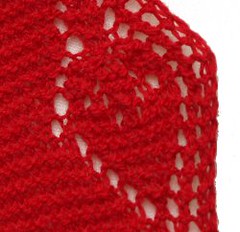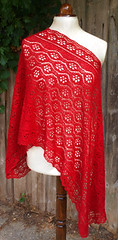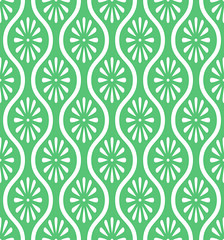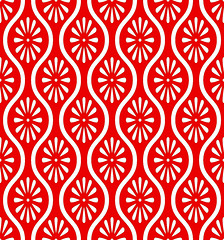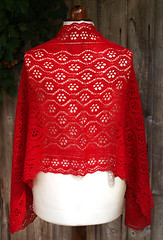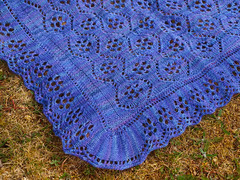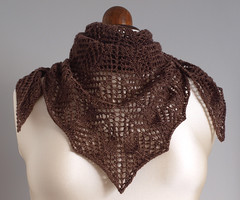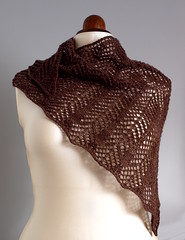
There is a Flower, the Lesser Celandine,
That shrinks, like many more, from cold and rain;
And, at the first moment that the sun may shine,
Bright as the sun itself, ‘tis out again!—William Wordsworth, The Small Celandine.
I would love to be able to say that Wordsworth’s poem had inspired this shawl but, to be completely honest, I had never heard of the poem until I was on the point of publishing the shawl and needed to find a name for it! It’s pure coincidence that it suits the shawl so well.
The actual inspiration for the shawl is a bit more complicated. Some time ago, a yarn company put out a call for submissions on the theme of fairy tales. I was immediately inspired and came up with a sideways-knitted shawl with a lace edging involving toads. Further reflection led to the realisation that the market for toad-related knitting patterns, while I’m sure one exists, is probably quite small. The toad pattern was shelved but I did keep the extensive notes I had made when experimenting with sideways-knitted shawls.
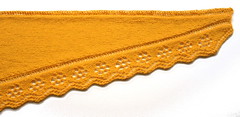
Soon after this, I decided that my Japanese-inspired shawl really needed a border and, since I couldn’t find an existing one that worked, I designed one from scratch. (I am still planning to release the pattern for this shawl; it’s just proving extremely difficult to write!)
Eventually, it occurred to me that the border could look quite pretty as an edging on a much plainer shawl and, after some swatching and some knitting, Celandine was the result.
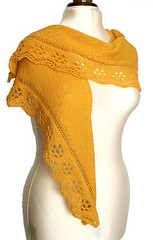
I had originally planned to call the shawl “Buttercup” but, not very surprisingly, Buttercup is a remarkably common name for knitting patterns (including at least one other small yellow shawl). A Google search for “buttercup” led me to the Wikipedia entry for Ranunculus, which in turn led me to the entry for Lesser Celandine, and the name was set. Interestingly, according to Wikipedia, Ranunculus is Latin for “little frog”, so I’ve ended up right back where I started—with amphibians!
Celandine is now available from Yellow Ginger Designs and Ravelry.


